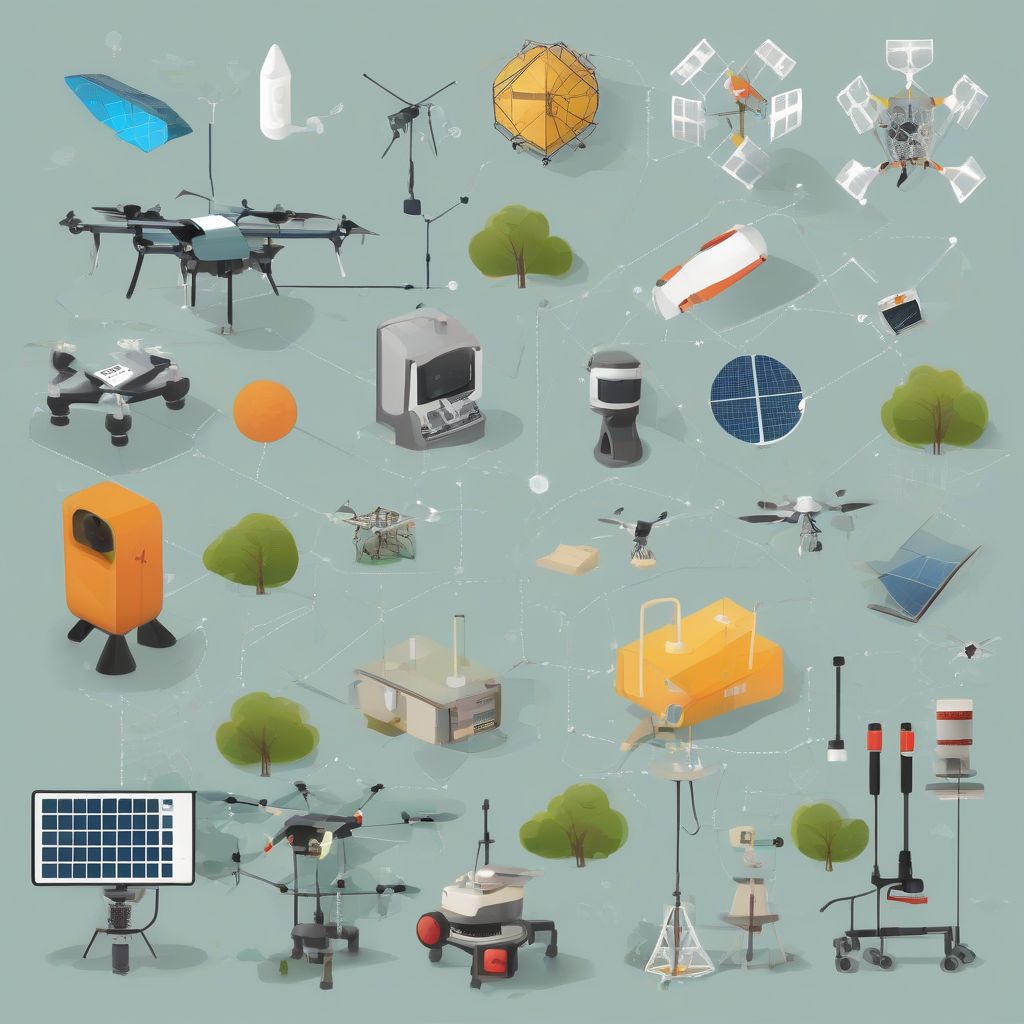Have you ever stopped to consider the sheer scale of our planet and the complexity of its ecosystems? It’s a humbling thought, isn’t it? Now, imagine trying to keep track of all the changes happening across our vast oceans, sprawling forests, and icy poles. It seems like an impossible task, right? Well, thanks to incredible advancements in technology, we’re now better equipped than ever to monitor the health of our environment. From satellites orbiting high above to sensors collecting data right beneath our feet, technology is revolutionizing how we understand and protect our planet.
A New Era of Environmental Monitoring
For decades, scientists have relied on traditional methods to study the environment, like manual observation and data collection. While valuable, these methods can be time-consuming, limited in scope, and sometimes even dangerous. This is where technology comes in, offering innovative solutions to overcome these challenges and provide a clearer, more comprehensive picture of our planet’s health.
Eyes in the Sky: Satellites and Remote Sensing
Imagine having a bird’s-eye view of the entire planet, constantly monitoring for changes. That’s essentially what satellites do! Equipped with advanced sensors, they orbit Earth, collecting vast amounts of data about our atmosphere, land, and oceans.
Here are just a few ways satellites are aiding environmental monitoring:
- Tracking Deforestation: High-resolution images from space allow us to monitor changes in forest cover, helping to combat illegal logging and protect vital habitats.
- Monitoring Ice Caps and Glaciers: Satellites track the size and movement of glaciers, providing crucial data on the effects of climate change.
- Detecting Pollution: Sensors can identify and track air and water pollution, helping to pinpoint sources and assess the impact on ecosystems.
On the Ground: Sensors and the Internet of Things (IoT)
While satellites provide a global perspective, ground-based sensors offer a closer look at localized environmental changes. These sensors, often connected through the Internet of Things (IoT), are becoming increasingly sophisticated and affordable.
Here are some examples of how sensors are being used:
- Monitoring Air Quality: Sensors placed in urban areas can measure levels of pollutants like ozone and particulate matter, providing real-time data to inform public health advisories.
- Tracking Water Quality: Sensors submerged in rivers and lakes can monitor temperature, pH, and the presence of contaminants, providing early warnings of pollution events.
- Studying Wildlife: GPS trackers attached to animals provide valuable insights into migration patterns, behavior, and habitat use.
The Power of Data Analysis and Artificial Intelligence
The vast amounts of data collected through these technologies are only as useful as our ability to analyze and interpret them. This is where artificial intelligence (AI) and machine learning come in, helping us to make sense of complex environmental data and identify patterns and trends.
Here’s how AI is transforming environmental monitoring:
- Predictive Modeling: By analyzing historical data, AI can help predict future environmental changes, such as drought conditions or the spread of wildfires.
- Early Warning Systems: AI can identify anomalies in real-time data, triggering alerts for events like floods, earthquakes, or volcanic eruptions.
- Conservation Efforts: AI can analyze data on wildlife populations, habitat quality, and human activity to inform conservation strategies and protect endangered species.
A Collaborative Future for Environmental Protection
Technology is not a silver bullet, but it’s a powerful tool in our fight to protect the planet. By embracing these advancements and fostering collaboration between scientists, policymakers, and the public, we can create a more sustainable future for generations to come.
It’s an exciting time to be engaged in environmental science, and I’m optimistic about the role technology will play in preserving the beauty and wonder of our natural world.
A Call to Action
What steps can we take to support these technological advancements and contribute to a healthier planet? Here are a few ideas:
- Stay Informed: Educate yourself about the latest environmental technologies and their applications.
- Support Sustainable Practices: Make conscious choices in your daily life to reduce your environmental impact.
- Advocate for Change: Encourage policymakers to invest in environmental monitoring and research.
Together, let’s harness the power of technology to create a brighter future for our planet.
 Environmental Monitoring Technology
Environmental Monitoring Technology
[amazon bestseller=”Environmental Monitoring”]
